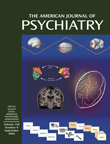Peter Liddle has carried out a considerable number of brain imaging studies, particularly in schizophrenia, and this book hinges on his concept that there are five principal dimensions of psychopathology. These are reality distortion, disorganization, psychomotor symptoms, abnormalities of mood, and anxiety. Each of these dimensions is associated with a characteristic syndrome and symptom cluster, and the symptom clusters are noted in differing psychiatric illnesses. Classically, the disorganization syndrome is most commonly seen in schizophrenia and the depression syndrome is characteristic of major depressive illness.
From this beginning, Liddle gives a neat overview of neuroanatomy and neurochemistry that is well presented and very up-to-date. He takes a connectionist viewpoint, in particular outlining important associations for the regulation of behavior between the limbic system and the structures of the basal ganglia. He incorporates in this text a clear account of neurochemical principles.
Part 2 of the book reveals the symptom clusters and the evidence for underlying neurochemistry and neuroanatomy relating to those structures. For those interested in an up-to-date review of brain imaging in relationship to psychopathology, this text is valuable, but there is a slight worry about how soon it will date because studies in this area are continuing all the time.
The third section of the book deals with the mental diseases themselves, and there are relatively short overviews of disorders from schizophrenia to psychopathy. The attempt is to integrate the findings in those disorders with the previously discussed concepts of the way the brain works in relationship to mental symptoms and the neuroscience findings in the different underlying syndromes.
The text has a central section of color plates showing neuroanatomical principles as well as outlines of some of the brain imaging findings discussed in the book with characteristic statistical parametric maps. Perhaps one criticism of the text is that although these images are clear and helpful, throughout the book there is a dearth of relevant visual material and tables to help the interested reader grasp some of the numerous findings that are relevant to Liddle’s ongoing arguments. Clinical descriptions of the different disorders are given, allowing nonclinical specialists to integrate the basic neuroscience with clinical presentations.
Produced by the Royal College of Psychiatrists in-house press, the book is elegant in presentation, and the print style is well laid out and very user friendly. There is a glossary at the end of the text, which allows the neophyte access to some of the terminology that otherwise may make the text more difficult to understand. This is an excellent and timely book that can be recommended to all of those with an interest in the neural basis of mental symptoms.

